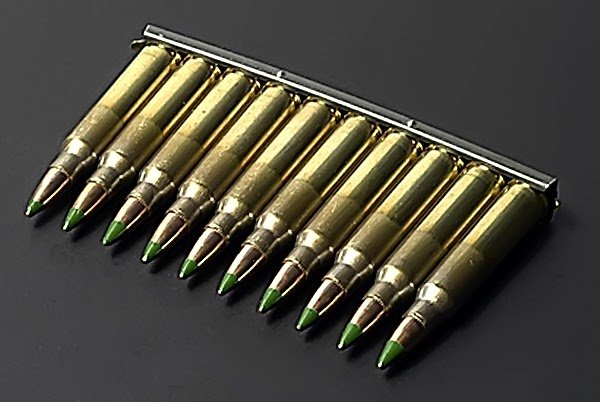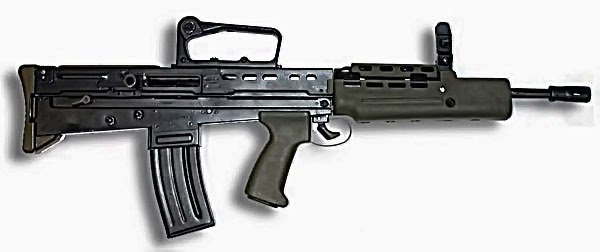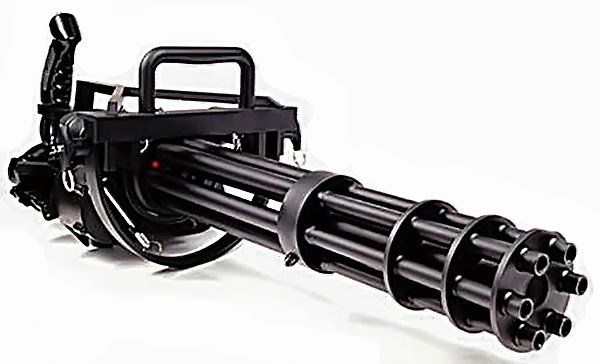Weapons of the late twentieth century
Weapons of the late twentieth century
In the second half of the 20th century, military conflicts acquired a local character, and small arms became easier and more diverse. Its importance has not decreased because of the development of armored vehicles and the emergence of missile strategic weapons. Conversely, small arms as the most massive became even more effective in combination with artillery fire, tanks and missile installations.
The main weapon of the infantry is assault rifles or assault rifles. They have an increased rate of fire and long range. To shoot them an intermediate cartridge is used. The automation of this weapon is based on the removal of powder gases.
The most successful model was designed in the USSR by T. Kalashnikov in 1947.
In Germany, after the failed MP-43, only in 1957 did the G-3 model of Hecklair and Koch appear.

Germans were ahead of the Belgians, creating in 1953 assault rifle FN FAL. On the basis of the Belgian, the English model L1-A1 was created. In the United States released assault rifles only in 1957.
In the 1960s they decided to reduce the caliber, so small arms became easier and more accurate. The initiators were Americans, who offered a 5.56-millimeter cartridge. Under him, the designer of the firm "Armalite" Yu Stone created in 1963 the famous M-16 assault rifle.

The next was the Kalashnikov assault rifle, which in 1974 was converted to a 5.45 mm cartridge (AK-74).

The design and manufacture of small arms in the second half of the twentieth century was concentrated in the most developed countries. The rest illegally copied models or bought ready-made weapons or a license for its manufacture. The Kalashnikov assault rifle was exported to dozens of countries, the Belgian FN FAL was in service with 70 states, and the German G-3 entered 40 countries.
All Western countries in 1952 adopted a unified NATO cartridge with a caliber of 7.62 x 51 millimeters to unify weapons.

The Europeans are introducing a reduced caliber corresponding to the American one. In 1978, the production of the Belgian rifle FNK.

A year later the German firm "Hecklair and Koch" adapted the G-3 to a caliber of 5.56 millimeters, creating assault rifles XK-33E and G-41 in different versions, including a manual machine gun.

In Austria in the same year create a universal small-caliber complex AUG in four modifications: assault rifle, carbine, assault rifle and manual machine gun.

The last was England, which adopted in 1985 only the rifle L85-A1.
The achievement of the last decade of the 20th century was the use of so-called podstvolnikov on all assault rifles and assault rifles, which are hand grenade launchers attached to the barrel.
Most new types of weapons have modifications with folding butts or truncated trunks.
In the 1990s, a new form of arms was formed under the "bullpup" scheme, in which the magazine and the bolt are located behind the handle. This reduces the size of the weapon and increases its accuracy. Today, only a few Austrian, French and English rifles are in service.
Along with manual and conventional machine guns, so-called uniform machine guns spread. They can be used both manual and on tripods as easel. A typical example is a modification Kalashnikov gun hand (PC) and the easel (PKC).
In the US, for about 40 years, there is a single M-60 machine gun and its upgraded version of the M60-E3.
In Germany, the MG-3 model is used as a single model, and in Belgium, the MAG.
One of the new models is a six-barrel machine gun with rotating barrels with a rate of fire up to 4000 rounds per minute. An electric drive was used to rotate the trunks. In the US, the model "Minigan" M-134 was developed, and in the transition to a caliber of 5.56 millimeters, a version of "Six Pack" was developed. It weighs 38 kilograms and can be used as an infantry weapon.
